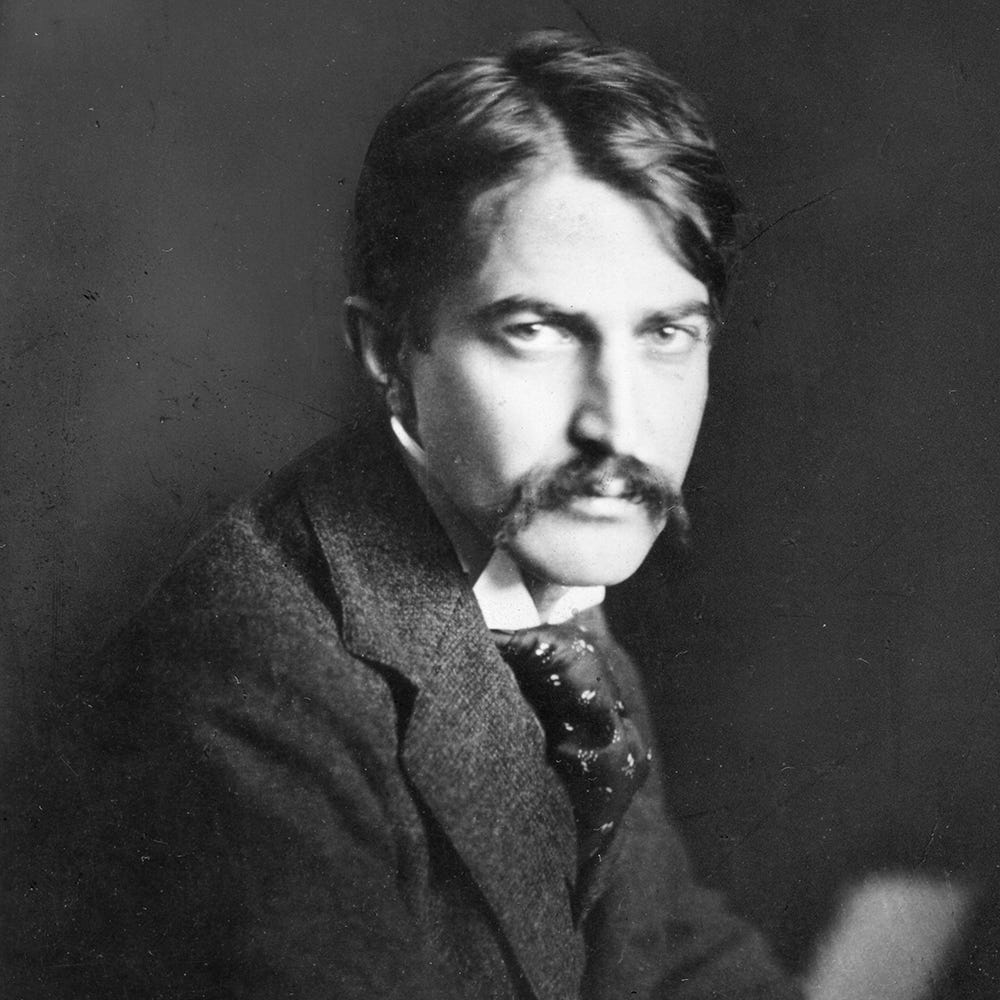You are viewing the article Stephen Crane at Tnhelearning.edu.vn you can quickly access the necessary information in the table of contents of the article below.

(1871-1900)
Who Was Stephen Crane?
One of America’s most influential realist writers, Stephen Crane produced works that have been credited with establishing the foundations of modern American naturalism. His Civil War novel The Red Badge of Courage (1895) realistically depicts the psychological complexities of battlefield emotion and has become a literary classic. He is also known for authoring Maggie: A Girl of the Streets.
Early Years and Education
Born on November 1, 1871, in Newark, New Jersey, Crane was the 14th and last child of writer/suffragist Mary Helen Peck Crane and Reverend Jonathan Townley Crane, a Methodist Episcopal minister. Raised by his older sister Agnes, the young Crane attended preparatory school at Claverack College. He later spent less than two years overall as a college student at Lafayette College in Easton, Pennsylvania, and then at Syracuse University in upstate New York. He then moved to Paterson, New Jersey with one of his brothers and made frequent trips to nearby New York City, writing short pieces on what he experienced there.
Bowery Bohemian
Crane truly embarked upon a literary career in the early 1890s when he moved to New York and began freelancing as a writer, coming to work for the New York Tribune. Living a bohemian lifestyle among local artists, Crane gained firsthand familiarity with poverty and street life, focusing his writing efforts on New York’s downtrodden tenement districts, particularly the Bowery. A once-thriving area in the southern part of Manhattan, the post-Civil War era saw the Bowery’s busy shops and hulking mansions replaced by saloons, dance halls and brothels. Crane immersed himself into this world.
‘Maggie: A Girl of the Streets’
While Crane most likely had completed an early draft of his first book, the novella Maggie: A Girl of the Streets (1893), while studying at Syracuse, it wasn’t until after moving to New York that he rewrote and finalized the piece—its pages fortified with details that he picked up in the Bowery. A compassionate story of an innocent and abused girl’s descent into prostitution and her eventual suicide, Maggie was initially rejected by several publishers who feared that Crane’s description of slum life would shock readers. Crane ended up publishing the work himself in 1893 under the pseudonym Johnston Smith.
Arena writer Hamlin Garland published a review following Maggie‘s release, calling the book “the most truthful and unhackneyed study of the slums I have yet read.” The work failed to garner further attention, though, and the expense of publishing it himself left Crane penniless.
(Crane would release a second edition of the book in 1896, softening some of the book’s graphic details and receiving wide recognition. At this point, of course, The Red Badge of Courage had also just been published to immediate success.)
‘Red Badge of Courage’
In 1895, Crane published what would become his most famous novel, The Red Badge of Courage. A work that followed an individual soldier’s emotional experiences in the midst of a Civil War battle, Courage became renowned for its perceived authenticity and realistic depictions of violent conflict. Crane had in fact never been in military combat, constructing scenes from research and what he referred to as skirmishes on the football field.
Due to Crane’s new reputation as a war writer, as well as his curiosity about his accuracy in depicting psychological states of combat, he undertook a new career: war correspondent. In 1897, Crane set sail for Cuba to report on the insurrection there. However, after the ship on which he was traveling, the SS Commodore, sank, Crane spent more than a day adrift with three other men. His account of the ordeal resulted in one of the world’s great short stories, “The Open Boat.”
Final Years and Death
Unable to get to Cuba, in April 1898 Crane went to Greece to report on the Greco-Turkish War, taking with him Cora Taylor, a former brothel proprietor married to an aristocratic captain who would refuse to give her a divorce. (Crane and Taylor would come to be recognized as common-law spouses.) After an armistice was signed between Greece and Turkey in May of that year, Crane and Taylor left Greece for England. Crane had continued to write, publishing two books of poetry as well as George’s Mother in 1896, The Third Violet in 1897 and Active Service in 1899. But mostly negative reviews of every novel since Courage caused his literary reputation to dwindle. Despite Courage being in its 14th printing, Crane was running out of money partially due to an ostentatious lifestyle.
On top of his mounting financial troubles, Crane’s health had been deteriorating for a few years; he had contracted everything from malaria to yellow fever during his Bowery years and time as a war correspondent. In May 1900, Crane, along with Cora Taylor, checked into a health spa on the edge of the Black Forest in Germany. One month later, on June 5, 1900, Crane died of tuberculosis at the age of 28, the same age at which his sister Agnes had passed.
The biography Stephen Crane: A Life of Fire was published in 2014 by scholar Paul Sorrentino, an expert on Crane who’s focused on presenting a nuanced look at the writer’s life.
QUICK FACTS
- Name: Stephen Crane
- Birth Year: 1871
- Birth date: November 1, 1871
- Birth State: New Jersey
- Birth City: Newark
- Birth Country: United States
- Gender: Male
- Best Known For: Stephen Crane was a 19th-century American writer best known for his novels ‘The Red Badge of Courage’ and ‘Maggie: A Girl of the Streets.’
- Industries
- Fiction and Poetry
- Crime and Terrorism
- Politics and Government
- Journalism and Nonfiction
- Astrological Sign: Scorpio
- Schools
- Lafayette College
- Syracuse University
- Claverack College
- Death Year: 1900
- Death date: June 5, 1900
- Death City: Badenweiler, Baden-Württemberg
- Death Country: Germany
Fact Check
We strive for accuracy and fairness.If you see something that doesn’t look right,contact us!
CITATION INFORMATION
- Article Title: Stephen Crane Biography
- Author: Biography.com Editors
- Website Name: The Biography.com website
- Url: https://www.biography.com/authors-writers/stephen-crane
- Access Date:
- Publisher: A&E; Television Networks
- Last Updated: May 25, 2021
- Original Published Date: April 2, 2014
Thank you for reading this post Stephen Crane at Tnhelearning.edu.vn You can comment, see more related articles below and hope to help you with interesting information.
Related Search:



